
One Ride at a Time
Three decades ago, Southern California got on board with Metrolink, with only three train routes. Today, Metrolink is the backbone of regional passenger rail, with seven train routes spanning five counties.
Looking back over the tracks we traveled, there is a legacy that provides focus and perspective to illuminate where we are headed for the next 30 years.
Metrolink is once again poised to build a transformative, inclusive, sustainable passenger rail system to serve future generations.
- Skip to1991
- Skip to1992
- Skip to1993
- Skip to1994
- Skip to1995
- Skip to1997
- Skip to1997
- Skip to1999
- Skip to2000
- Skip to2001
- Skip to2004
- Skip to2006
- Skip to2007
- Skip to2008
- Skip to2009
- Skip to2010
- Skip to2011
- Skip to2013
- Skip to2014
- Skip to2015
- Skip to2016
- Skip to2017
- Skip to2018
- Skip to2019
- Skip to2020
- Skip to2021

1991
At the Planning and Mobility Improvement Committee meeting on July 17, 1991, the Southern California Regional Rail Authority (SCRRA) is formed as a Joint Powers Authority (JPA) and chooses “Metrolink” as the official name for Southern California’s future commuter rail agency.

1992 - October 26, 1992 – Opening Day
The first Metrolink service begins. Metrolink offers three routes as alternatives to freeway congestion in busy transit corridors: The Ventura County Line, the San Bernardino Line, and the Santa Clarita Line, which will become the Antelope Valley Line. Historic Union Station in downtown Los Angeles serves as Metrolink’s central transit hub.

1993
The Riverside Line opens to the public in June, becoming Metrolink’s fourth line in operation.
-
1993
In October, Metrolink celebrates its one-millionth passenger.
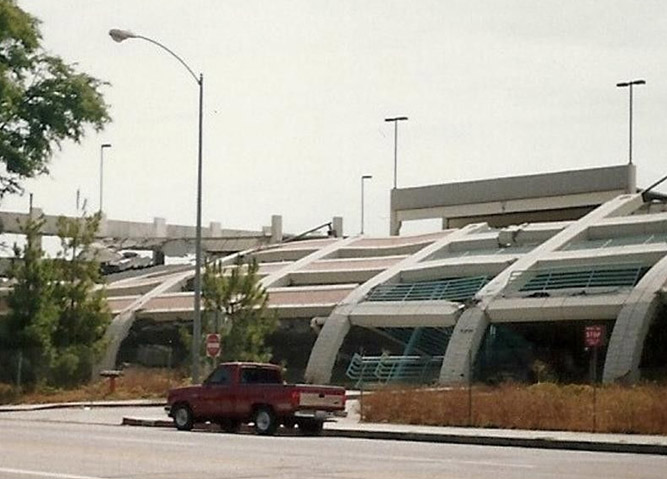
1994
On January 17, a major earthquake strikes Northridge. Severe impacts are felt throughout Southern California.

1994
Because thousands of people were effectively cut off from LA after the earthquake, Federal officials expedite construction of Metrolink’s Antelope Valley Line, and six stations were built in six weeks along its corridor and on the Ventura County Line, extending service to Lancaster and Oxnard.
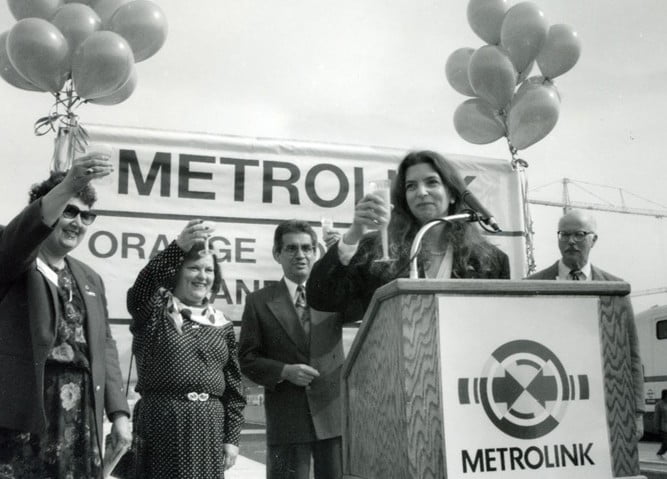
1994
The Orange County Line opens in March, becoming the longest in Metrolink’s system.
-
1995
Startup of Inland Empire-Orange County Line, the nation’s first suburb-to-suburb commuter rail line.
-
1995
The San Bernardino Line’s Saturday Explorer debuts, pioneering the concept of regular weekend service, special trains and summer excursions, key customer incentives in the coming decades.
-
1996
Inland Empire – Orange County Line special beach trains debut

1997
Metrolink's first annual Holiday Toy Express train debuts and collects more than 5,000 toys for underprivileged kids.
-
1997
Saturday Explorer service is added to the Antelope Valley Line. The popular Explorers gain steadily increasing ridership.
-
1998
The Ventura County Transportation Commission approves the extension of six routes to Moorpark.

1999
Metrolink experiences boost in ridership resulting from Metro’s Red Line extension to Hollywood.
-
1999
In October, a Simi Valley commuter becomes Metrolink’s 35 millionth rider.
-
2000
Metrolink riders take advantage of a “First Month Free” promotion offered by Spectrumotion; the number of Metrolink commuters arriving at the Irvine Transportation Center increases 242%.
-
2001
Metrolink strengthens its system security in response to the 9/11 attacks.
-
2002
The 91 Line opens, becoming Metrolink’s seventh route and linking Riverside-Downtown, Fullerton and Downtown LA.

2002
The Rail 2 Rail® program starts, allowing Metrolink Monthly Pass holders to transfer to selected Amtrak routes at no additional charge.
-
2004
San Bernardino County voters overwhelmingly approve the extension of the Measure I sales tax for transportation improvements; 80.03% vote to extend the measure through 2040.
-
2005
January 26: A Metrolink train collides with an abandoned SUV at an at-grade crossing in Glendale, causing 11 deaths. Metrolink meets with legislators, regulators and federal lawmakers in Washington, D.C., to gain support for a comprehensive strategy of safer crossings, less accessible right of ways, and development of Crash Energy Management (CEM) rail cars, which incorporate state-of-the art collision-absorption technology based on findings by the Federal Railroad Administration (FRA).
-
2006
In February, Metrolink’s Board of Directors awards Hyundai Rotem a contract to build 117 safety-enhanced railcars, the first in the U.S. to be equipped with Crash Energy Management (CEM) technology designed to absorb impact and reduce injuries in the event of a collision.
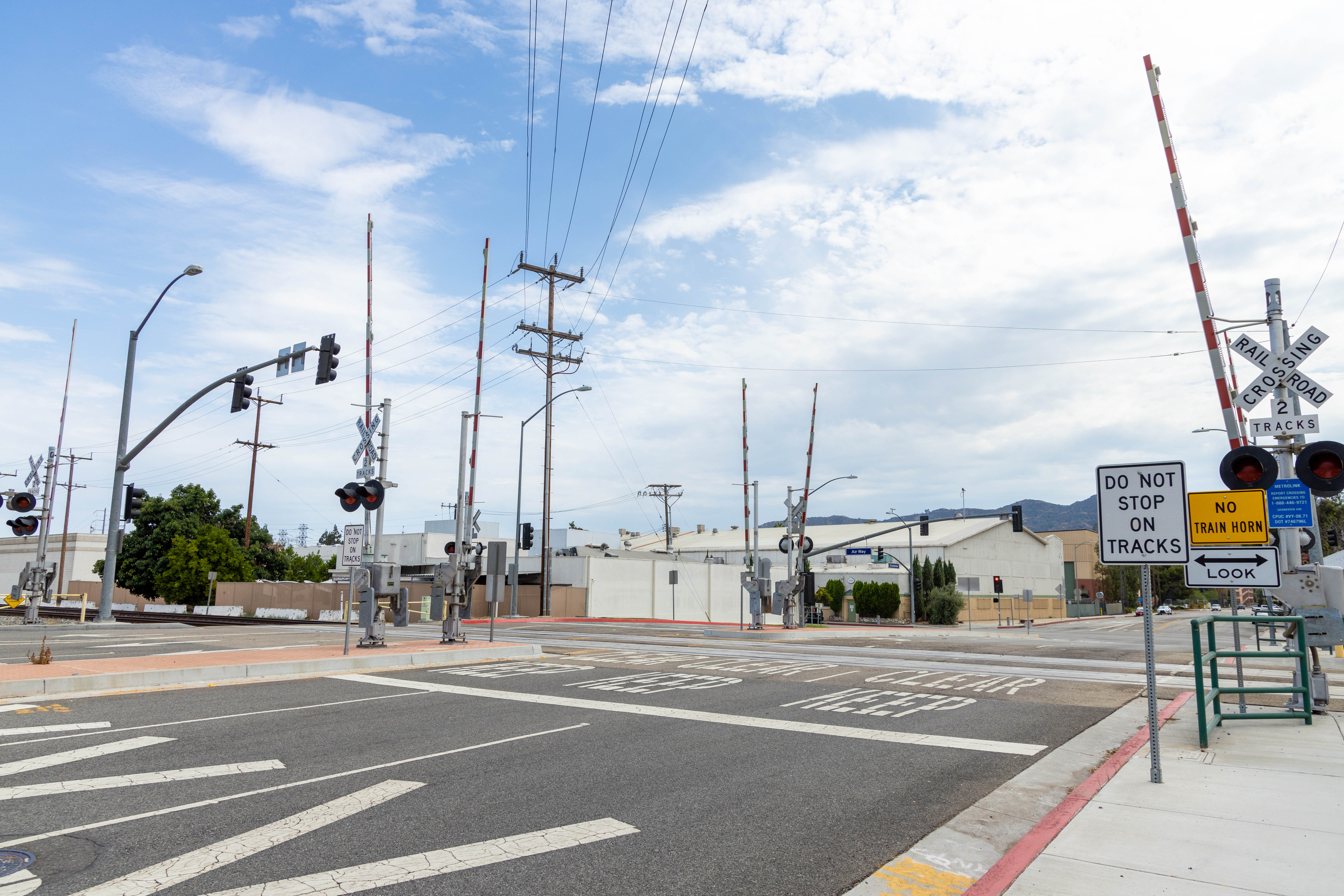
2007
Metrolink breaks ground on its Sealed Corridor Program to reduce the potential for accidents at 57 different at-grade crossings, and becomes the first U.S. commuter rail agency to apply sealed corridor methods to densely populated urban areas with high volumes of street and rail traffic.
-
2008
A Metrolink train collides head-on with a Union Pacific freight train September 12: A Metrolink train collides head-on with a Union Pacific freight train near Chatsworth, killing the engineer and 25 passengers. This incident redoubles Metrolink’s commitment to safety. Metrolink strongly supports the Rail Safety and Improvement Act of 2008, requiring the implementation of Positive Train Control (PTC) by freight carriers and rail agencies by the end of 2015. The act becomes law. Metrolink is determined to implement the life-saving technology to ensure the safety of its passengers, and sets a goal to implement PTC ahead of the federal mandate.
-
2008
Metrolink expands its Sealed Corridor Program.

2009
Metrolink becomes the nation’s only railroad agency, commuter or freight, to install inward-facing cameras in the operator’s cab of its trains to reduce the risk of accidents and provide additional safety for its passengers and crews. The cameras are used to verify train crews are in compliance with necessary operating and safety rules and procedures, for efficiency testing and systemwide performance review, and to deter unsafe or unauthorized crew member behavior while operating trains.
-
2009
In August, Metrolink breaks ground on the Orange County Rail-Highway Grade Crossing Safety Enhancement Program. It is the largest grade crossing safety enhancement program in the United States and includes 52 crossings in eight cities. The program uses the new design practices and standards for grade crossings, developed by Metrolink’s Engineering & Construction department.

2010
Delivery of the first safety-enhanced Hyundai Rotem railcars equipped with Crash Energy Management (CEM) technology begins. Metrolink is the first commuter rail carrier in the nation to use the new CEM technology, which diverts energy away from passengers in the event of an incident. The option to buy additional cars is approved by Metrolink’s Board, bringing the total to 137.
-
2011
Metrolink's goal to implement Positive Train Control (PTC) ahead of the federal mandate receives a boost when it receives $46.3 million to support the installation of the new rail safety technology.
-
2012
Metrolink’s Board of Directors authorizes the agency to secure Tier 4 Locomotives. The diesel locomotives are the cleanest in the nation, and will reduce particulate matter and nitrogen oxide emissions by up to 85 percent, while using 8% percent less fuel. The engine offers significantly more horsepower, allowing Metrolink to move more people with more reliability. Download PDF of Tier 4 Locomotive Fact Sheet.
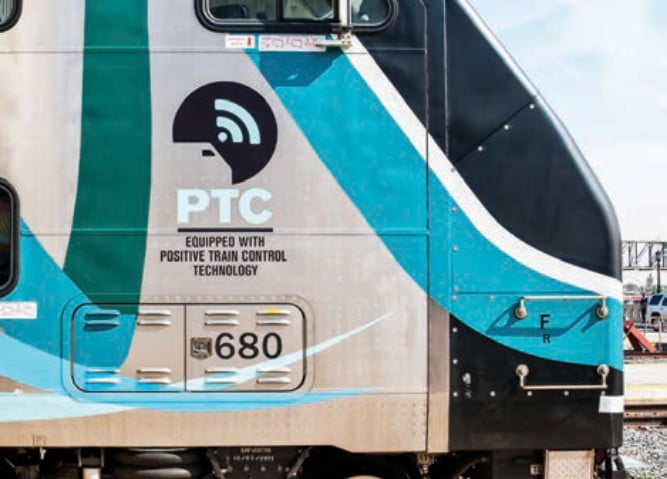
2012
In September, Metrolink unveils its first fully-equipped Positive Train Control (PTC) test train. The National Transportation Safety Board (NTSB) recognizes Metrolink as a national leader in PTC: “Metrolink's leadership to implement PTC is a model for others across the rail industry to follow."
-
2012
The Orange County Rail-Highway Grade Crossing Safety Enhancement Program is completed. Most of its $85 million cost is covered through taxpayer-funded Measure M, and is used to implement upgraded warning devices, additional gate arms, reconstructed crossing surfaces and medians, improved signage, and coordinated traffic signals. As a result of these safety enhancements, the OCTA member cities’ applications to establish Quiet Zones are granted by the Federal Railroad Administration (FRA). The approved Quiet Zone spans 34 railroad crossings in six cities and is the longest continuous Quiet Zone in the nation.
-
2013
Metrolink receives the last of its new Hyundai Rotem railcars equipped with Crash Energy Management (CEM) technology.
-
2013
Metrolink introduces TAP-enabled tickets and passes that are compatible with Metro’s TAP system, which reduces fare evasion while improving system safety and security. Over a one-month period, Metrolink riders tap more than 100,000 times at Metro turnstiles and validators.
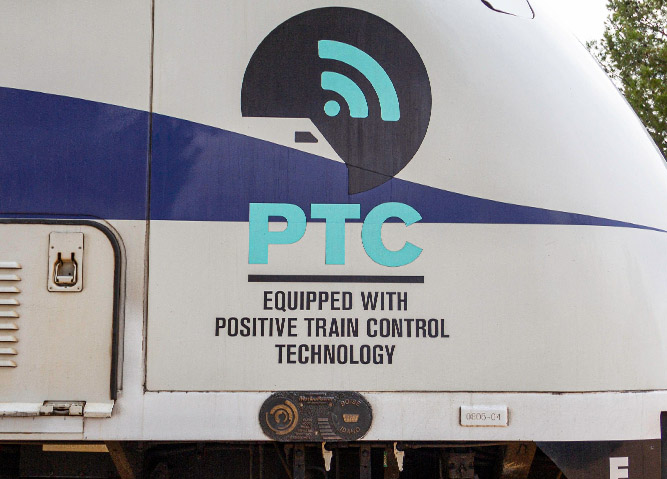
2014
In February, Metrolink achieves a milestone in Positive Train Control (PTC) when it receives authorization from the Federal Railroad Administration (FRA) and operates PTC in Revenue Service Demonstration (RSD) on the Orange County and 91 lines.
-
2014
Construction begins on the Perris Valley Line, a 24-mile extension of the 91 Line that is Metrolink’s first major expansion since the early 1990s.
-
2015
February 24: Thirty people are injured when a Metrolink train strikes an unoccupied truck and trailer near Oxnard. A valued member of the Metrolink team, an Amtrak engineer named Glenn Steele, later died from injuries from this accident.
-
2015
In June, Metrolink makes history when it launches Positive Train Control (PTC) in across the entire 341-mile network it owns.
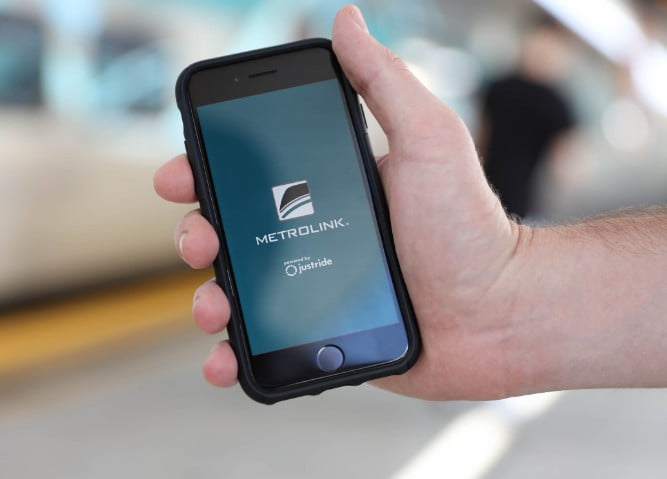
2016
In March, Metrolink launches mobile ticketing for passengers making it easy to purchase tickets on the go.
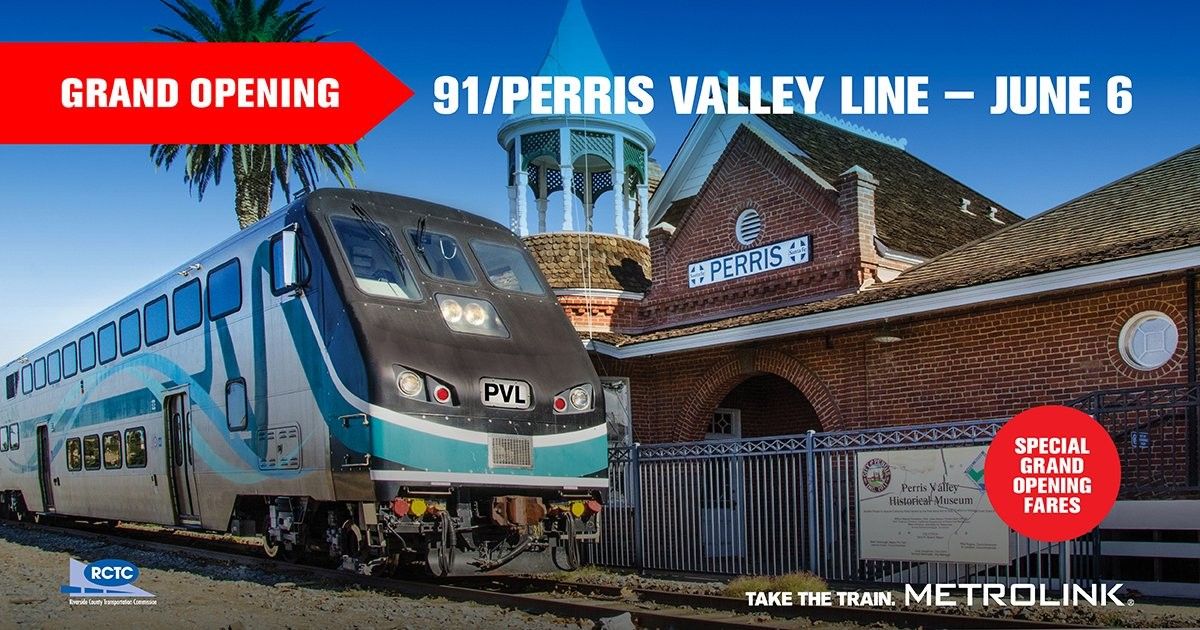
2016
In June, Metrolink celebrates opening of the Perris Valley Line, a 24-mile extension of the 91 Line that is Metrolink’s first major expansion since 1994, occurs on June 6. Four stations are constructed.
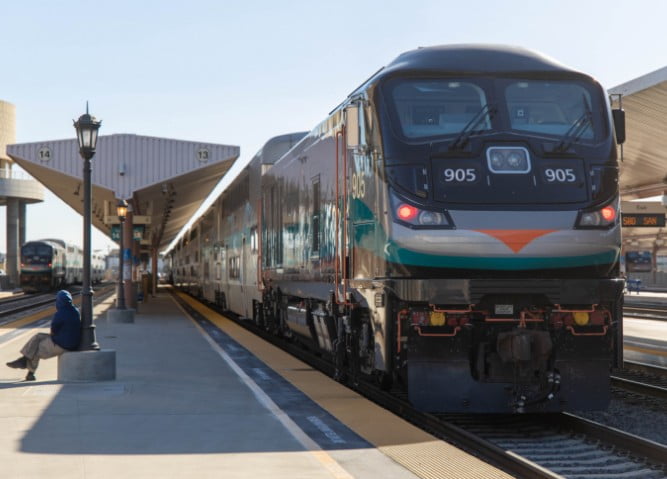
2016
Metrolink’s first Tier 4 locomotive arrives to Los Angeles Union Station. The diesel locomotives are the cleanest in the nation and will reduce particulate matter and nitrogen dioxide emissions by up to 85 percent, while using 8% less fuel. The engine design offers significantly more horsepower, which will allow greater flexibility in scheduling service.

2017
In anticipation of our 25th anniversary in October, Metrolink offers for the first time ever a 25% discount to new Corporate Partner Program members, good for six months after a partner joins the program.
-
2017
In September 2017, Metrolink launches an updated website featuring a global positioning system (GPS) tool allowing riders to locate trains in real time.
-
2017
October 2017, the first of 40 new clean fuel-powered Tier 4 locomotives begins service. Tier 4 trains reduce emissions by up to 85% and generate up to 64% more horsepower, improving reliability for passengers.
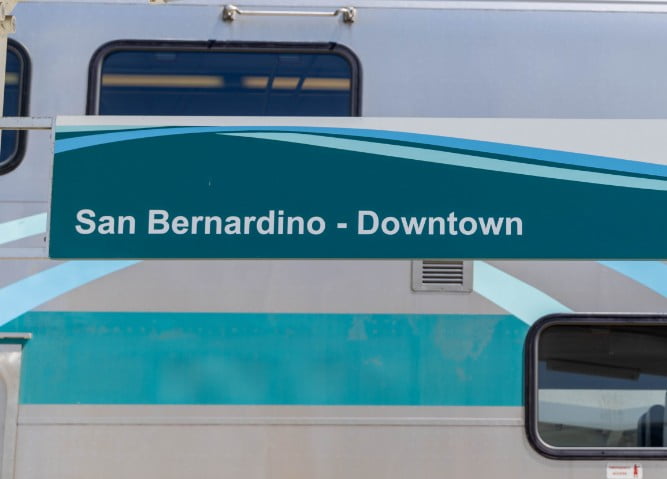
2017
December 2017 – Metrolink extends service on the San Bernardino and Inland Empire – Orange County lines with a new station in downtown San Bernardino, adjacent to the San Bernardino Transit Center, connecting riders to multiple regional transit agencies.
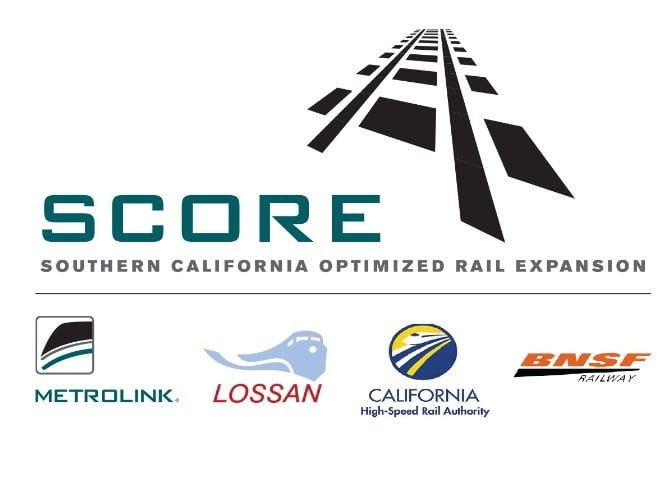
2018
In April, a total of $1.2 billion in state grants is awarded to fund infrastructure and service improvements including Metrolink’s innovative SCORE plan. The Southern California Optimized Rail Expansion (SCORE) plan was developed in partnership with freight and intercity rail operators as a roadmap to increased rail service to accommodate expected population and job growth in advance of 2028, when Los Angeles will host the Olympics.
-
2018
In May, Apple Pay® is added as a payment method for the Metrolink mobile ticketing app, enabling customers to purchase tickets with just a tap.

2019
January 2019: Stephanie Wiggins, a transportation industry veteran with more than 24 years’ experience, begins her leadership as the new CEO of Metrolink. Stephanie, the first African-American, woman to lead Metrolink brought with her the strategic vision of enhancing the customer experience for current and future riders.
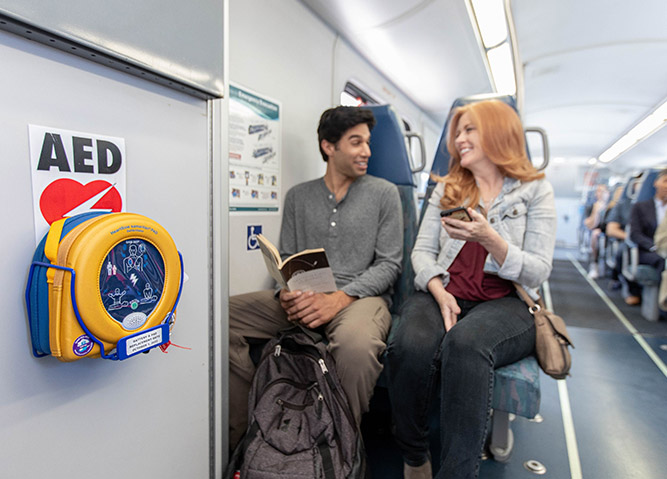
2019
In February, Automated External Defibrillators (AEDs) are installed on all trains with hands-on and online instruction in use of the life-saving technology.
-
2019
September: Metrolink hosts a national Rail Safety Summit welcoming leaders in safety and security from around the country. Issues addressed include railroad crossing safety, mental health and homelessness affecting rail safety, quiet zone implementation and future improvements to Positive Train Control (PTC).
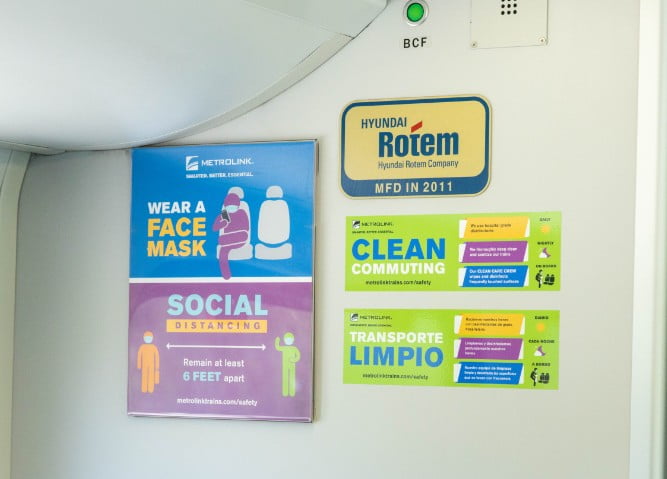
2020
March- Metrolink announces new Clean Commute protocols to keep passengers and staff safe aboard trains Image
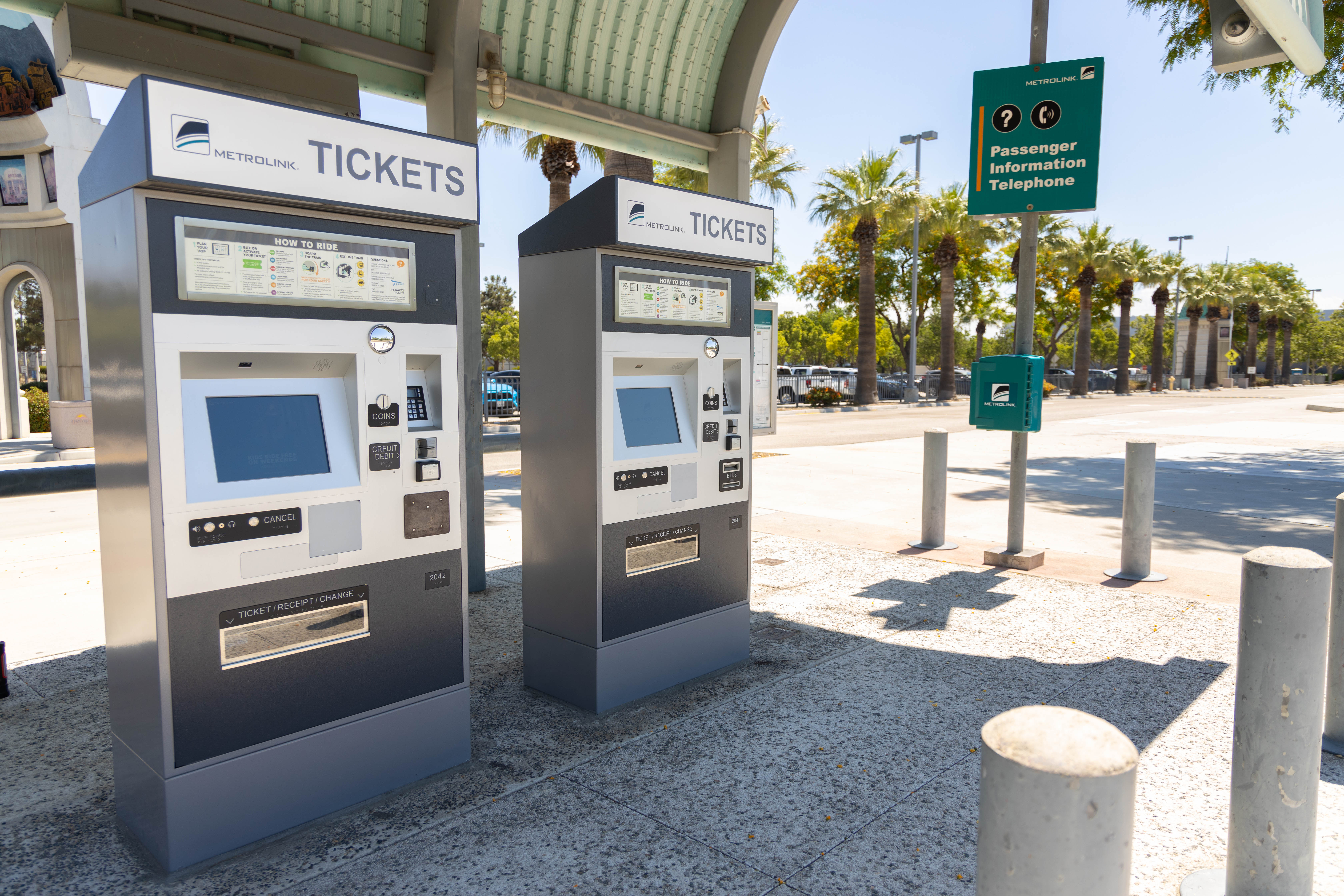
2020
July - Metrolink announces the installation of 133 new ticket machines at its stations across Southern California. The new machines improve the customer experience through improved reliability, a focus on accessibility, and smarter, more customer-friendly features, such as touchscreens.
-
2020
October - Metrolink, launched SoCal Explorer, a new loyalty program that rewards riders with points as well as exclusive offers and perks from local businesses and attractions throughout the Southern California region. The program makes it more affordable for people to make taking the train a part of their everyday lifestyle.
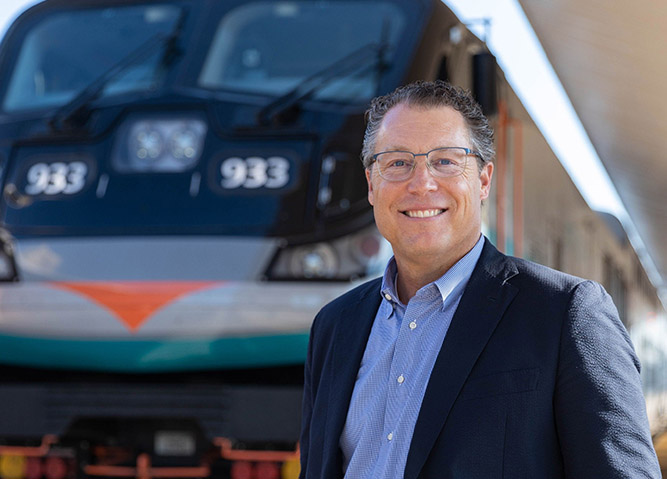
2021
July - The Southern California Regional Rail Authority Board of Directors names Darren Kettle Metrolink's Chief Executive Officer (CEO).
Darren joins Metrolink with a career spanning 32 years of working for local and regional government agencies - including executive roles in three of the five-member agencies that comprise SCRRA. His extensive leadership experience, vision and passion made Darren the board's ideal candidate to rebuild ridership lost during the pandemic and transform Metrolink into a true regional passenger rail system in advance of the Olympic and Paralympic Games in 2028 and beyond.
-
2021
Metrolink announced the launch of a Business Partnership Program (SBPP), an innovative initiative that helps Southern California’s local small businesses bid more competitively and equitably on the agency’s contracts.
-
2022
April – Metrolink restored 26 trains to meet rider demands
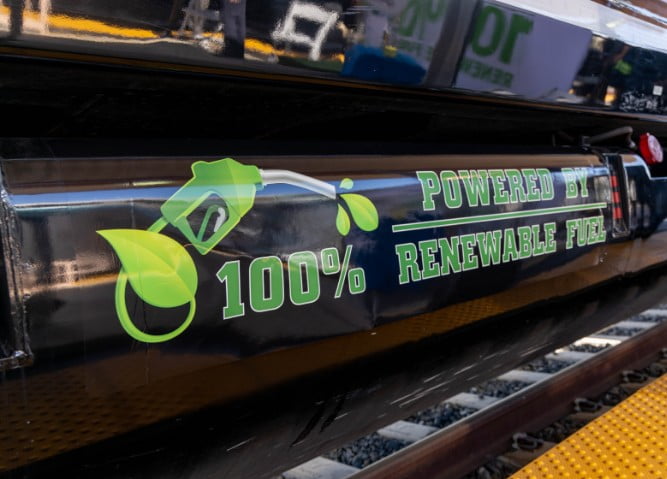
2022
April: Metrolink publicly shared its switch to renewable fuel, making the agency the first in the nation to completely power all its locomotives by the cleaner burning alternative.
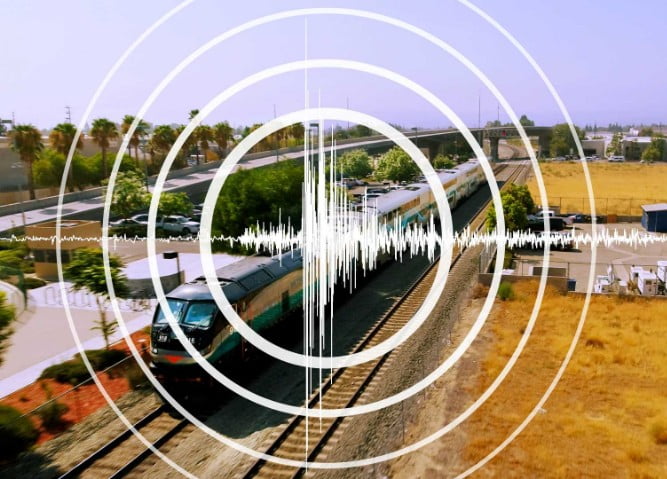
2022
June: Metrolink announced an important advancement in its Earthquake Early Warning System (EEW) with new technology that automatically applies the brakes for safe and rapid slowing or stopping of trains in the event of an earthquake.
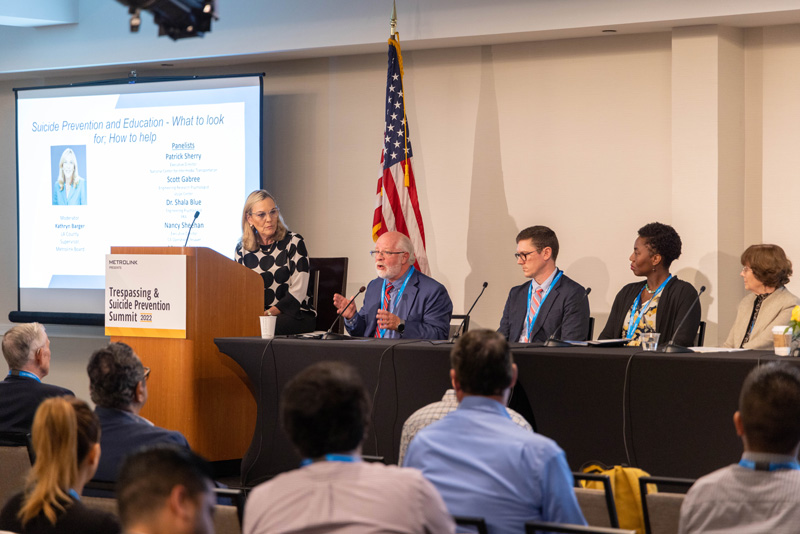
2022
Sept. 21, Metrolink hosted the 2022 Railroad Trespassing and Suicide Prevention Summit for transportation leaders to share knowledge and best practices about enhancing safety along the railroad. Keynote speakers included FRA Chief Counsel Allison Ishihara Fultz and CalSTA Secretary Toks Omishakin.
